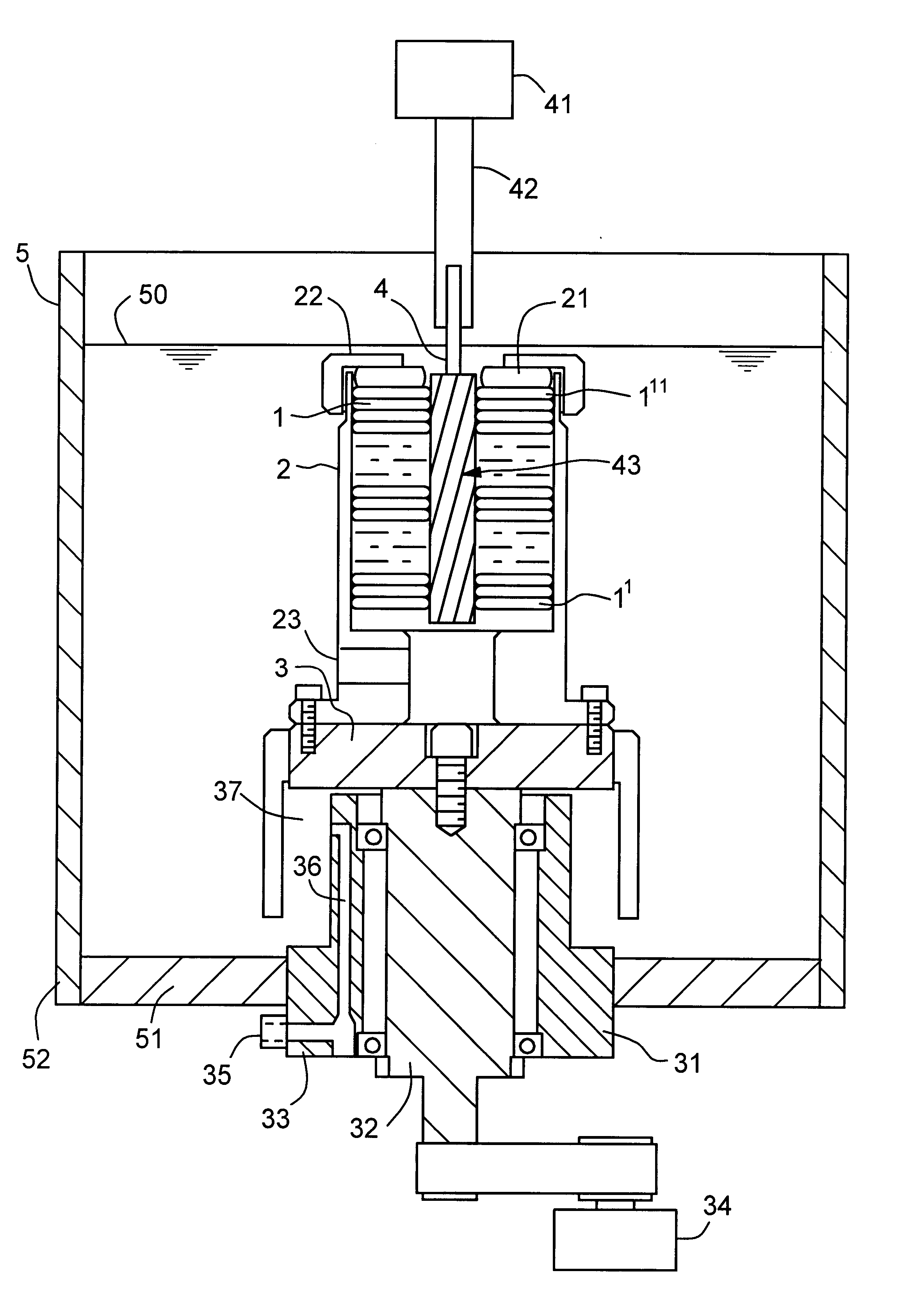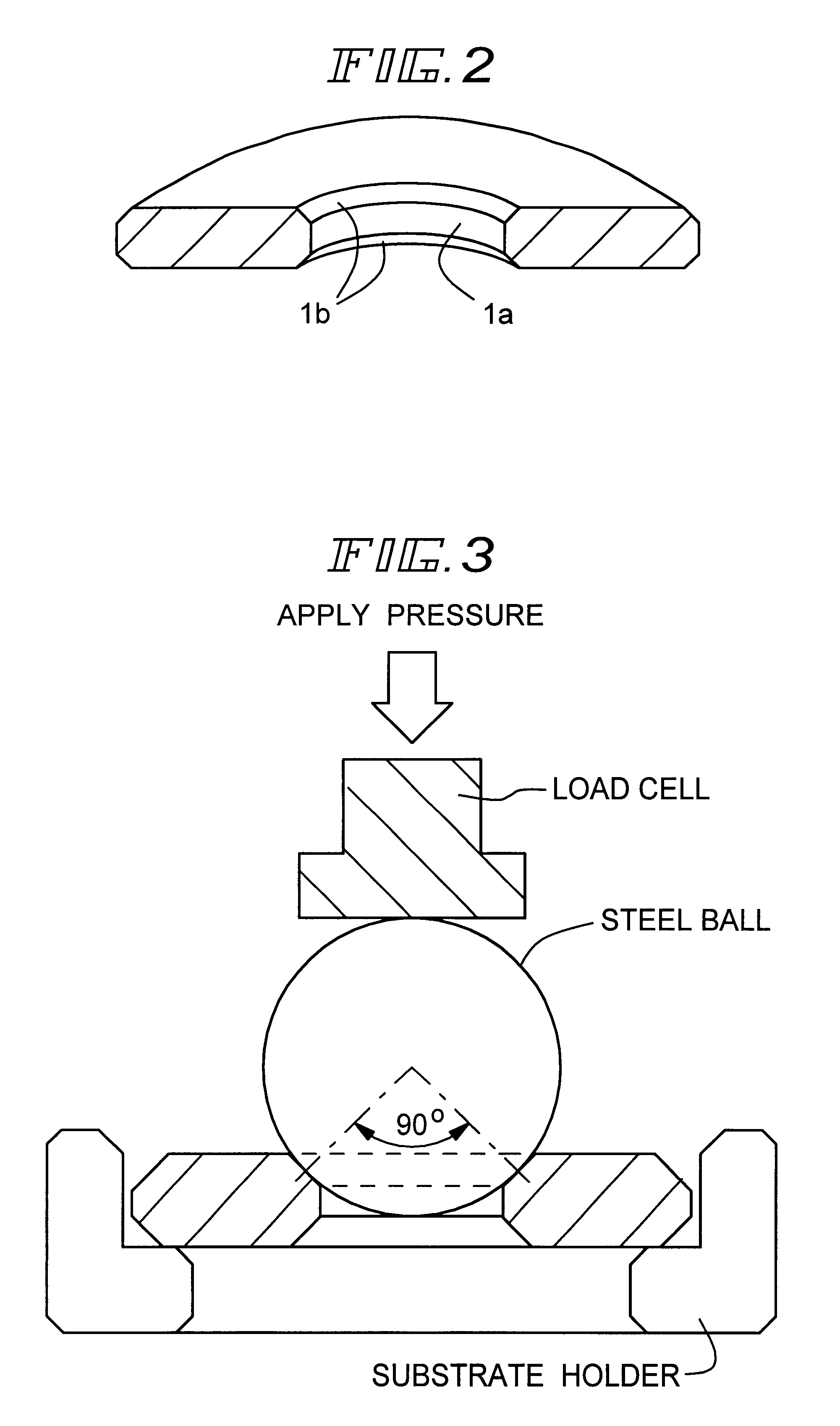Polishing method, polishing device, glass substrate for magnetic recording medium, and magnetic recording medium
a technology of polishing device and polishing method, which is applied in the direction of lapping machines, instruments, manufacturing tools, etc., can solve the problems of forming convex portions, forming defects on the glass substrate surface, and arising after new problems in the glass substrate for the magnetic recording medium,
- Summary
- Abstract
- Description
- Claims
- Application Information
AI Technical Summary
Problems solved by technology
Method used
Image
Examples
third example
A glass substrate for a magnetic recording medium and the magnetic recording medium were obtained in the same manner as the second example, except that, as shown in FIG. 4, the outer peripheral end surfaces of the glass substrates were polished (sprayed with or immersed in the abrasive liquid) for 30 minutes by rotating the rotary brush 4 with a diameter of 230 mm (bristle length of 10 to 30 mm ) at 700 to 1000 rpm and by rotating the stacked MD substrates 1 at 60 rpm as shown in FIG. 4, before the inner peripheral end surfaces were polished.
As a result, the surface roughness of the outer peripheral end surface was 0.6 .mu.m in Rmax and 0.04 .mu.m in Ra, while the surface roughness of the inner peripheral end surface was 0.5 .mu.m in Rmax and 0.03 .mu.m in Ra. Moreover, when the deflection strength was measured using the deflection strength tester (Shimazu Autograph DDS-2000) shown in FIG. 3, it was about 18 to 22.5 kg. Additionally, when the deflection strength was measured in the ...
fourth example
A glass substrate for a magnetic recording medium and the magnetic recording medium were obtained in the same manner as the second example, except that a polishing pad was used instead of the rotary brush to polish the inner and outer peripheral end surface.
As a result, the surface roughness Ra of the outer peripheral end surface was 0.03 .mu.m on the chamfered portion and 0.01 .mu.m on the side-wall portion. Additionally, the surface roughness Ra of the inner peripheral end surface was 0.03 .mu.m on the chamfered portion and 0.01 .mu.m on the side-wall portion.
sixth examples
Fifth and Sixth Examples
Glass substrates for magnetic discs and the magnetic discs were obtained in the same manner as the second example, except that soda-lime glass (fifth example) and soda aluminosilicate glass (sixth embodiment) were used instead of aluminosilicate glass.
As a result, when the soda-lime glass was used, the outer and inner peripheral end surfaces of the glass substrate were slightly rougher than when aluminosilicate glass was used, which was not a practical problem.
PUM
| Property | Measurement | Unit |
|---|---|---|
| Viscosity | aaaaa | aaaaa |
| Shape | aaaaa | aaaaa |
Abstract
Description
Claims
Application Information
 Login to View More
Login to View More - R&D
- Intellectual Property
- Life Sciences
- Materials
- Tech Scout
- Unparalleled Data Quality
- Higher Quality Content
- 60% Fewer Hallucinations
Browse by: Latest US Patents, China's latest patents, Technical Efficacy Thesaurus, Application Domain, Technology Topic, Popular Technical Reports.
© 2025 PatSnap. All rights reserved.Legal|Privacy policy|Modern Slavery Act Transparency Statement|Sitemap|About US| Contact US: help@patsnap.com



